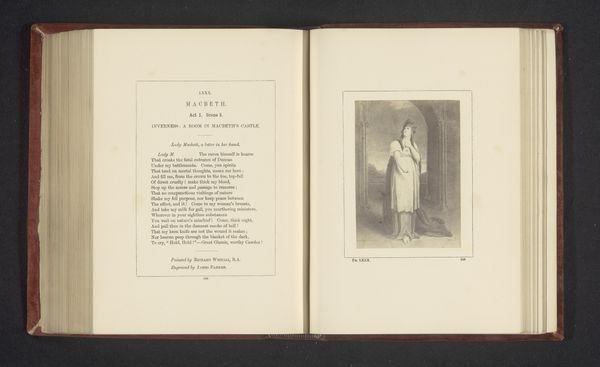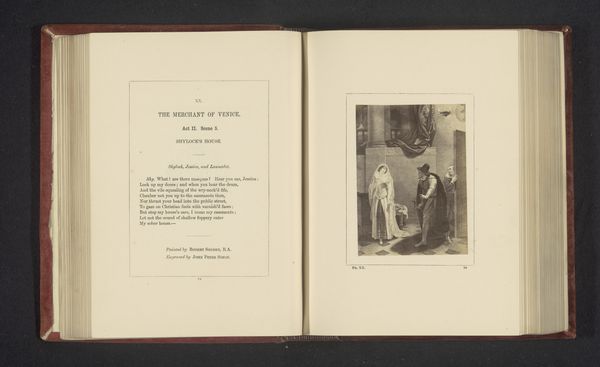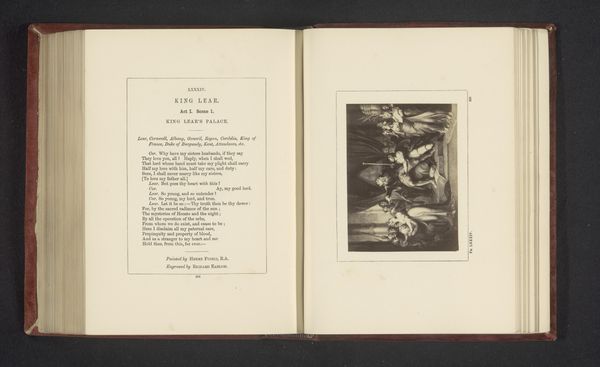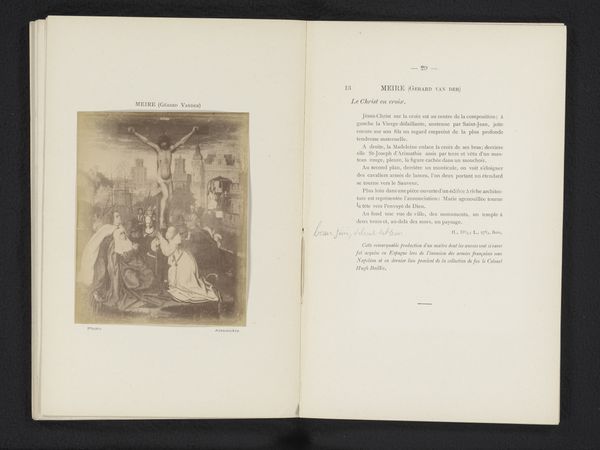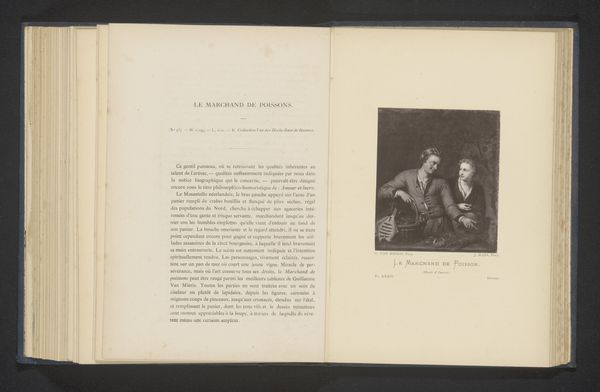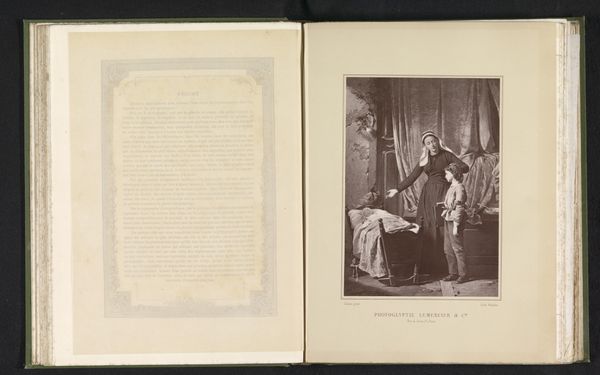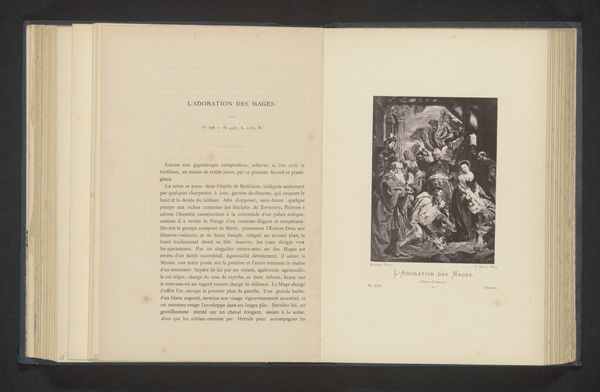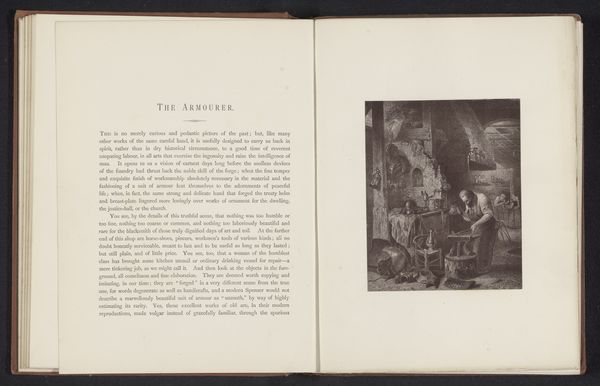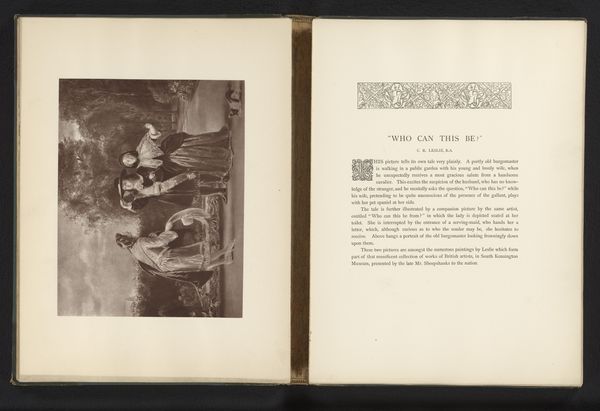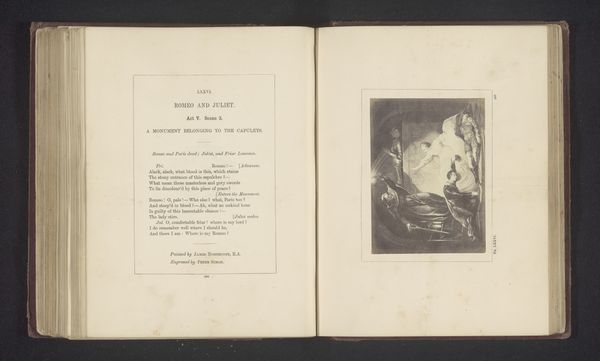
Fotoreproductie van een prent naar een schilderij van een gezelschap in een woonkamer, een illustratie bij het lied Duncan Gray, door David Wilkie before 1873
0:00
0:00
anonymous
Rijksmuseum
Dimensions: height 130 mm, width 106 mm
Copyright: Rijks Museum: Open Domain
Editor: This print, “Fotoreproductie van een prent naar een schilderij van een gezelschap in een woonkamer, een illustratie bij het lied Duncan Gray, door David Wilkie," before 1873, in the Rijksmuseum, is an etching of what looks like a somber domestic scene. It's quite small, contained within the book's pages. What strikes me is the tight composition. What do you see in the artwork's formal elements? Curator: Precisely. Let us consider the internal relationships within this two-dimensional space. Notice how the artist employs a restricted palette, largely monochrome, emphasizing tonal contrasts to delineate form. This lack of color directs the eye to the nuances of light and shadow, crucial in establishing spatial depth and emotional tenor. Editor: So the monochrome enhances the sense of depth, despite it being a flat print? Curator: Indeed. Observe the strategic deployment of line—thin and precise in the figures, broader and more gestural in the background. This differential application serves to isolate the human figures. The composition uses a structured arrangement. Note the careful arrangement of figures within the confines of the interior space. Editor: It's fascinating how much meaning you can draw from what seems like simple visual choices. It almost feels like the lines are more intentional. Curator: Indeed, from the emphasis on the manipulation of visual elements and their contribution to the overall aesthetic experience. How this artwork engages us. Form gives rise to aesthetic sensation. Editor: I appreciate that insight. I am able to recognize so much by looking closer at line, shadow, and depth within composition, not just as representational tools. Thanks.
Comments
No comments
Be the first to comment and join the conversation on the ultimate creative platform.

